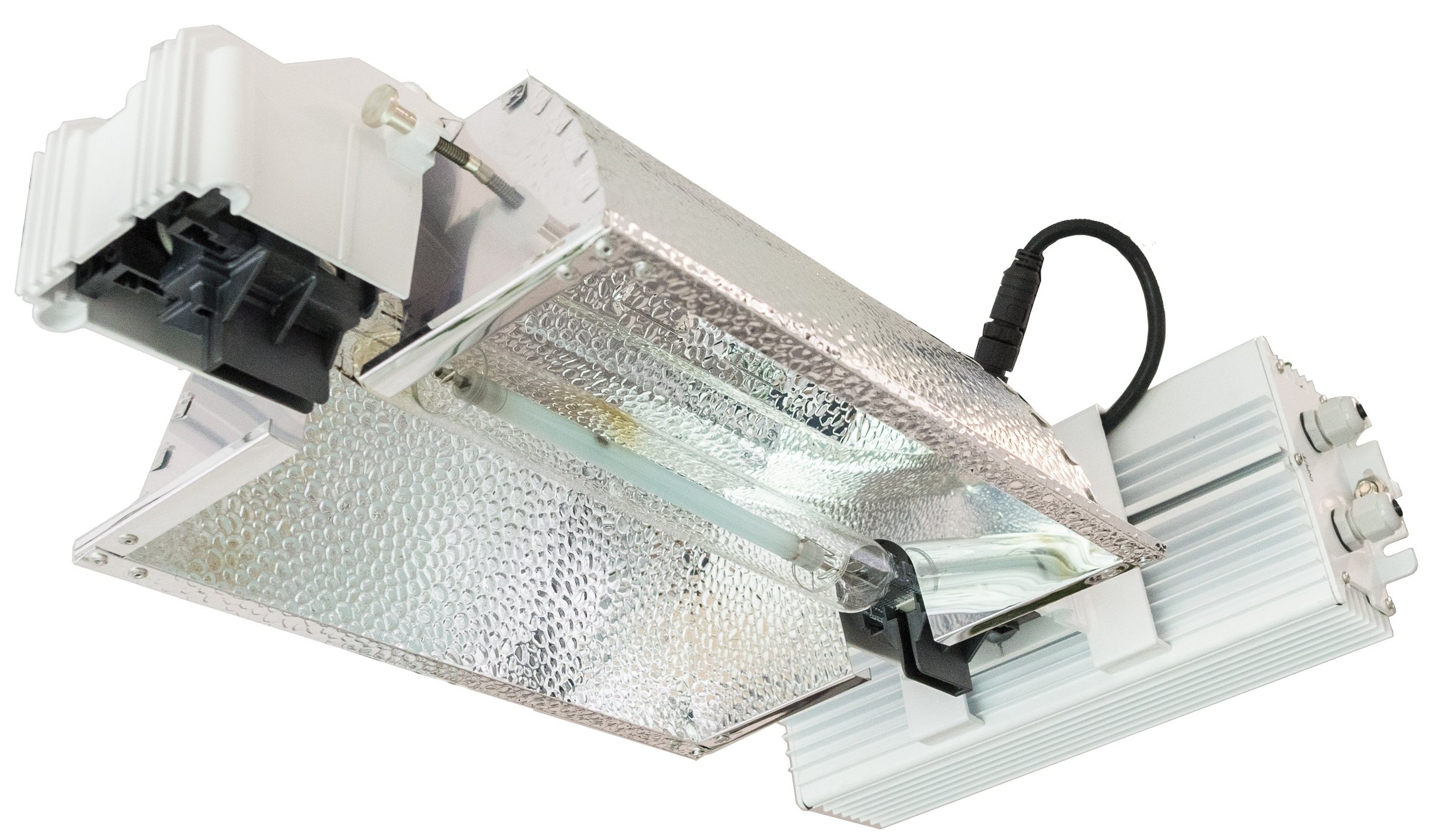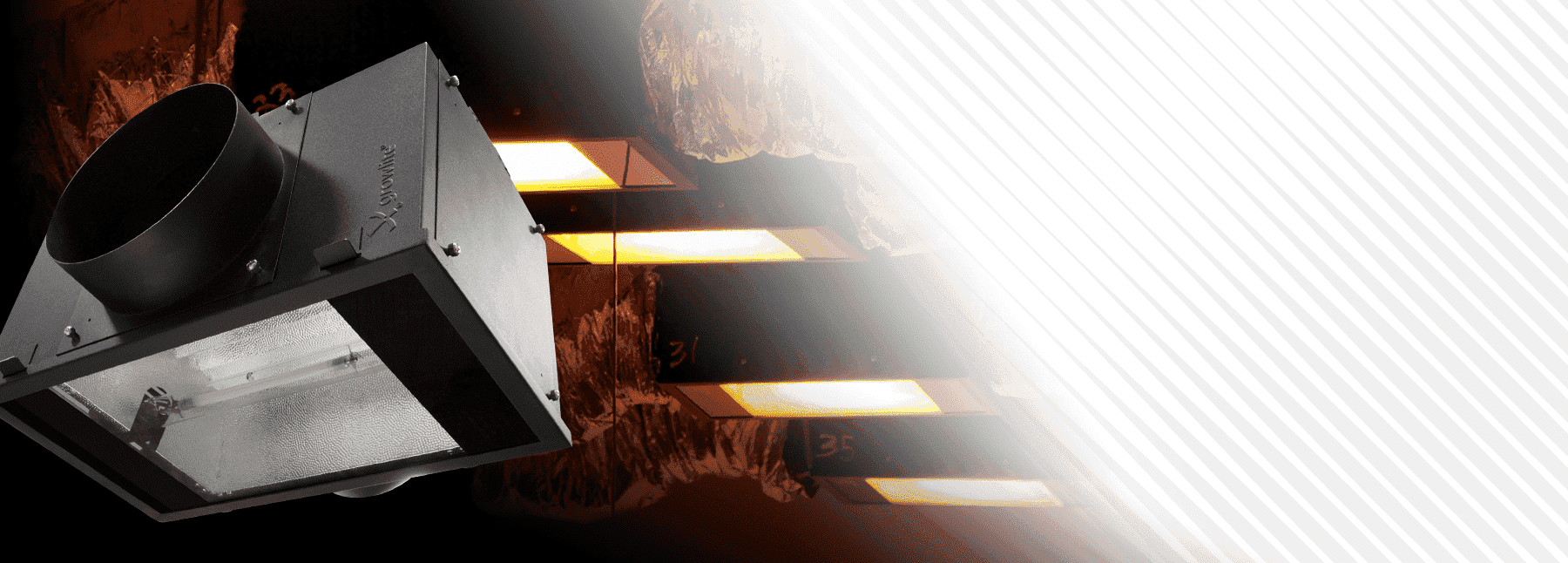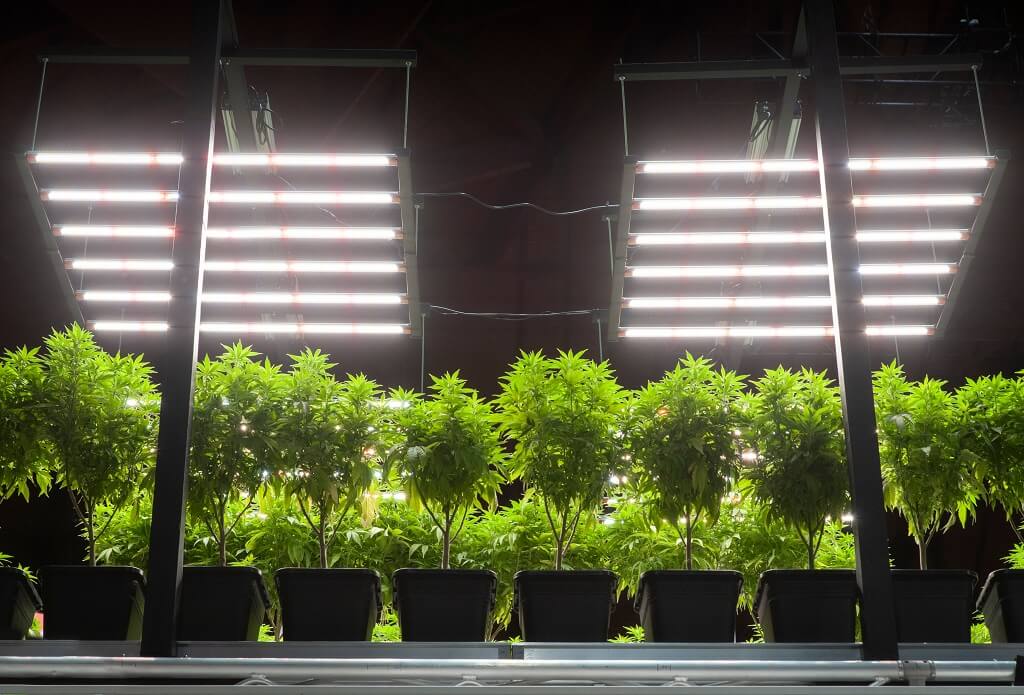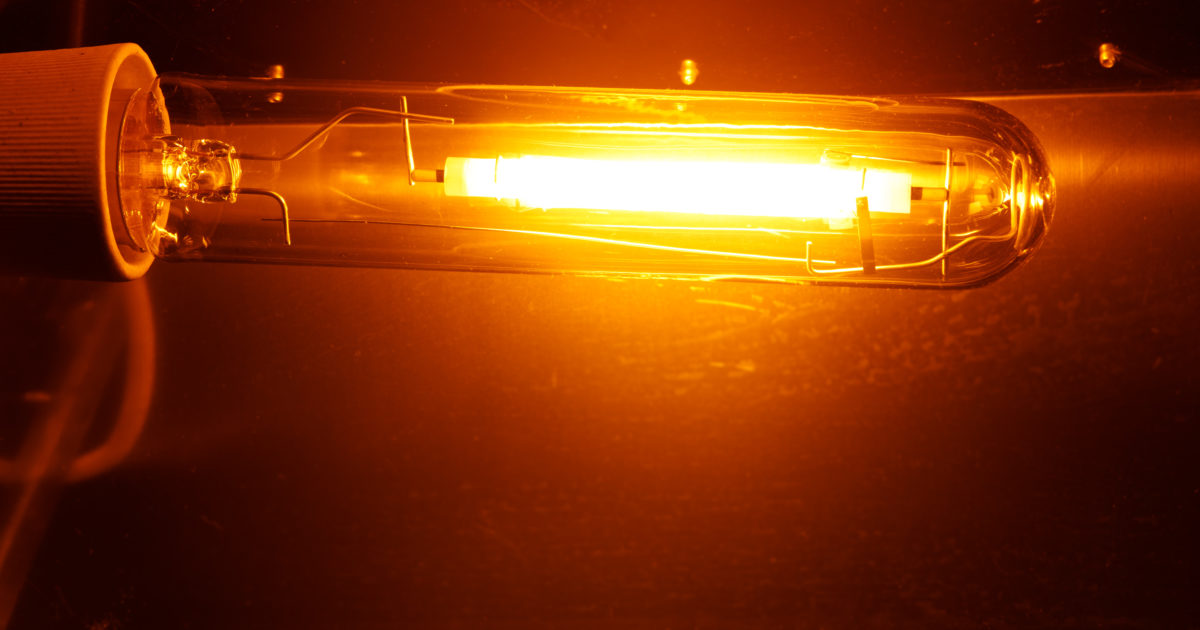What are HID Grow Lights
Ever wondered what it takes to transform a humble seed into a thriving plant? Apart from water, nutrients, and love, light plays a pivotal role, and HID lights are often the MVPs of the indoor gardening universe! Born from the fusion of science and horticultural genius, these power-packed bulbs are often the secret sauce behind those lush, envy-inducing indoor gardens. So whether you're just sowing your first seed or you're a seasoned botanist, this guide promises to illuminate (pun intended!) your journey. Let’s plug in and grow!
Benefits of HID Grow Lights
HID (High-Intensity Discharge) grow lights are a popular choice for indoor growers due to their numerous advantages and benefits. Here are some key benefits of using HID grow lights:
- Light Output: HID grow lights offer intense light output, providing bright and vibrant illumination to promote healthy plant growth. They generate a large amount of light, which helps plants in both the vegetative and flowering stages.
- Heat Energy: HID lights provide not only light but also heat energy, which is beneficial for plants during colder seasons. The excess heat emitted by HID bulbs helps to maintain optimal temperatures in the growing space.
- Mimic Sunlight Wavelengths: HID bulbs produce a spectrum of light that closely resembles natural sunlight. This characteristic makes HID lights effective in promoting overall plant health, from vegetative growth to flower production.
- Affordability: HID grow lights are more affordable compared to LED lights, making them a cost-effective choice for many indoor growers. They require fewer initial investments and more budget-friendly electricity costs, resulting in a lower cost per watt of light produced.
Types of HID Grow Lights

HID, or High-Intensity Discharge, grow lights come in two main types: metal halide (MH) bulbs and high-pressure sodium (HPS) bulbs. MH bulbs emit a bluer light spectrum, which is ideal for the vegetative stage of plant growth. This spectrum promotes healthy leaf development and dense foliage. On the other hand, HPS bulbs emit a redder light spectrum, which is more suitable for the flowering stage. This spectrum encourages blooming and the development of fruits and flowers. Both MH and HPS bulbs provide intense light output, making them popular choices among indoor growers.
High-Pressure Sodium (HPS) Bulbs
High-Pressure Sodium (HPS) bulbs are a popular choice among indoor growers, specifically during the flowering stage of marijuana growth. These bulbs emit a high-intensity, orange-red light that is ideal for promoting bud development and flowering.
However, one drawback of HPS bulbs is their lack of blue spectrum light, which is essential for vegetative growth. This issue can be resolved by using separate light systems or by combining HPS bulbs with metal halide bulbs during the vegetative stage.
Another factor to consider with HPS bulbs is their high energy consumption. These bulbs require a significant amount of electricity to produce their intense light output. Additionally, HPS bulbs generate a large amount of heat, making heat dissipation a crucial consideration for indoor growers.
Despite these challenges, HPS bulbs remain a popular choice for indoor growers due to their effectiveness in the flowering stage. They provide the necessary light spectrum for promoting bud development and achieving high-quality yields. However, for a more balanced growth throughout the entire plant's life cycle, a combination of different types of lights or the use of Full Spectrum LED grow lights is recommended.
Metal Halide (MH) Bulbs
Metal Halide (MH) bulbs are a popular choice among indoor growers, especially during the vegetative stage of marijuana production. These bulbs emit a bright light that promotes leafy green plant growth, making them ideal for nurturing healthy and vigorous plants.
MH bulbs have a specific light spectrum that can be blended to optimize plant growth. This spectrum typically includes a higher proportion of blue light, which is beneficial for vegetative growth. By providing the right balance of light spectrums, MH bulbs enable plants to efficiently photosynthesize, resulting in healthier plants.
One advantage of metal halide bulbs is their ability to produce intense light output, allowing for excellent light penetration and distribution throughout a larger space. This ensures that every plant receives an equal amount of light, promoting uniform growth.
However, there are also disadvantages to using MH bulbs. One major challenge is the excess heat generated by these bulbs. High-intensity discharge lights, such as MH bulbs, can produce significant amounts of heat, which can be detrimental to the growth and health of plants if not properly managed. Additionally, MH bulbs consume a significant amount of electricity, leading to higher electricity costs over time.
Ceramic Metal Halide (CMH) Bulbs
Ceramic Metal Halide (CMH) bulbs are a popular choice among indoor growers due to their efficient light output and balanced spectrum. These bulbs produce a bright and intense light that closely mimics natural sunlight, promoting healthier plants and maximizing growth.
Unlike other HID grow lights, CMH bulbs emit a wider spectrum of light that includes both blue and red wavelengths. This makes them suitable for both vegetative and flowering stages of plant growth, as the blue light promotes leafy growth during the vegetative stage while the red light enhances blooming and fruiting during the flowering stage.
CMH bulbs also have a higher efficiency compared to traditional High-Pressure Sodium (HPS) or Metal Halide (MH) bulbs. They produce more usable light per watt of electricity consumed, resulting in reduced electricity costs for indoor growers.
Another advantage of CMH bulbs is their ability to penetrate and distribute light more evenly throughout the plant canopy. This helps ensure all parts of the plant receive the suitable amount of light for optimal growth, minimizing the risk of spindly growth or uneven development.
Choosing the Right HID Grow Light for Your Plants

When it comes to indoor gardening, one crucial factor to consider is the type of grow light you choose. HID grow lights, or High-Intensity Discharge grow lights, are popular among indoor growers due to their high light output and suitability for different stages of plant growth. These lights emit a wide spectrum of light, which is essential for healthy plant development.
Light Output and Intensity Level
Light output and intensity level are significant factors to consider when discussing HID grow lights. Light output refers to the total amount of light emitted by a grow light, while intensity level measures the concentration of light in a specific area. Both aspects play a crucial role in promoting healthy plant growth.
The efficiency of HID grow lights can vary depending on the fixture size and components. Efficiency is typically measured in umols per joule, which indicates how much light energy is produced per unit of electrical energy consumed. Different types of HID grow lights offer varying efficiency levels.
For instance, a 400w HPS fixture may have an efficiency as low as 0.9 umols per joule, whereas high-end LED fixtures can achieve an efficiency as high as 3 umols per joule. LED grow lights tend to be more efficient than traditional HID options, as they can produce the same or more light at a lower energy consumption rate.
Cost-effectiveness is an essential consideration for indoor growers, and HID grow lights are often associated with high electricity costs due to their lower efficiency levels. LED grow lights, on the other hand, provide a more cost-effective solution in the long run. They not only save on electricity costs but also have longer lifespans and reduce the need for frequent bulb replacements.
Light Spectrums and Color Temperature
LED grow lights are a popular choice among indoor growers because they offer a full spectrum of light for both the vegetative and flowering stages of plant growth. Unlike traditional lighting systems like high-pressure sodium (HPS) or metal halide (MH) lights, LED lights eliminate the need to swap lights as your plants progress through different growth stages.
One significant advantage of LED grow lights is their ability to customize the light spectrum to meet the specific needs of your plants. By adjusting the color temperature, you can provide the ideal wavelengths of light that promote optimal growth and development. However, it's important to note that altering the light spectrum on LED lights may lower the light output and make it difficult to see the leaves of your plants.
LED grow lights emit a wide range of light spectrums, including blue and red wavelengths that are crucial for both vegetative and flowering stages. Blue light promotes vegetative growth, resulting in healthy and robust plants with larger leaves. On the other hand, during the flowering stage, red light enhances bud formation and encourages blooming.
With LED grow lights, indoor growers can provide their plants with the right amount of light to ensure healthier growth and higher yields. Additionally, LED lights are energy-efficient, helping to reduce electricity costs compared to traditional high-intensity discharge (HID) lights.
Growth Stage of Your Plant

Choosing the right HID grow light is crucial for providing the ideal lighting conditions for your plants at every growth stage. Different growth stages of plants require specific light spectrums and intensity levels to promote optimal growth and flowering.
During the vegetative stage, plants require a higher proportion of blue light, which promotes compact and leafy growth. This stage is crucial for establishing a strong root system and building the plant's overall structure. LED lights with a higher blue spectrum and metal halide bulbs are popular choices for this stage.
As the plant enters the flowering stage, it requires a light spectrum with a higher proportion of red light. This spectrum encourages the production of flowers and fruits. High-pressure sodium (HPS) lights, which emit a warmer yellowish-red light, are commonly used during this stage. The intense light output of HPS bulbs allows for better bud production.
It's important to note that the light intensity and duration should be adjusted as the plant progresses through different growth stages. During the vegetative stage, plants generally require 14-18 hours of light per day, whereas the flowering stage benefits from 12 hours of light followed by 12 hours of uninterrupted darkness.
Size of Your Growing Space
When it comes to choosing HID grow lights for your indoor growing operation, one important factor to consider is the size of your growing space. The size of your space will directly impact the amount of light coverage and penetration your plants receive, which in turn affects their growth and overall yield.
In larger growing spaces, it is crucial to opt for more powerful HID grow lights that can provide adequate light distribution and penetration. This is because larger spaces require lights with a higher light output to ensure that every plant in the space receives enough light for healthy growth. Insufficient light coverage can result in uneven plant development and reduced crop output.
Inadequate light coverage becomes especially challenging for taller plants. As they grow taller, the lower leaves tend to receive less light, causing them to become shaded and less productive. This lack of light can hinder the plant's photosynthesis process, leading to stunted growth and lower yields.
To overcome these challenges, it is essential to select HID grow lights that are appropriate for the size of your growing space. Proper light distribution and penetration can be achieved by strategically placing the lights throughout the space, using reflectors or light movers to ensure all areas receive an optimal amount of light.
Electricity Costs
Electricity costs are a significant consideration for indoor growers using HID (high-intensity discharge) lights. These powerful grow lights can contribute significantly to your monthly electric bill. The operating cost per month can vary depending on the wattage of the lamps and the duration of use.
The electricity costs for HID lights typically range from $7 to $20 per month. This estimation is based on the wattage of the lamp and the cost per kilowatt-hour (KWH) stated on your electric bill. The higher the wattage and the longer you keep the lights on, the more you can expect to pay for electricity.
Factors such as the size of your indoor garden and the number and wattage of HID lights you use will affect your electricity costs. It's essential to consider these costs when planning your indoor growing setup.
To help reduce electricity costs, some indoor growers opt for more energy-efficient lighting options, such as LED lights. LED technology provides efficient light output while consuming less energy. Though LED lights have a higher upfront cost, they can save you money in the long run by reducing your electricity bills.
Heat Production and Excess Heat
When it comes to HID grow lights, heat production and excess heat are significant factors that need to be considered. HID (High-Intensity Discharge) lights generate a substantial amount of heat during operation, which can potentially have adverse effects on plants if not properly managed.
Compared to LED lights, HID lights generate more heat. This is because HID lights use a high-pressure sodium (HPS) bulb or metal halide bulbs, which produce intense light and heat as a byproduct. This excess heat can lead to temperature fluctuations within the grow room or tent, and create an unfavorable environment for plant growth.
To prevent overheating, additional cooling fixtures are required when using HID lights. These fixtures include exhaust fans, air conditioners, or ducting systems to remove the excess heat and maintain optimal temperature levels. Without proper cooling, the heat generated by HID lights can result in wilted leaves, stunted growth, and even plant death.
It's essential to be aware of the potential risks and safety concerns associated with the high temperature of HID bulbs. The intense heat they produce can pose a fire hazard if not properly ventilated and cooled. It is crucial to regularly monitor the temperature and ensure that the cooling fixtures are functioning correctly to prevent any potential accidents.
Pros and Cons of Using HID Grow Lights

HID (High-Intensity Discharge) grow lights have been a popular choice among indoor growers for decades. They offer several advantages but also come with a few drawbacks.
One of the major pros of using HID grow lights is their lower upfront cost compared to LED lights. HID lights can be more affordable, making them a more accessible option for growers on a tight budget. Another advantage is their intense light penetration. HID bulbs emit strong light that can penetrate deep into the canopy, ensuring that all parts of the plant receive adequate light for healthy growth.
However, HID lights also have their downsides. One of the main disadvantages is their high operating costs. HID lights consume more electricity than other lighting systems, leading to higher electricity bills. Additionally, HID lights generate excess heat, which can be challenging to manage. This excess heat can result in the need for additional cooling systems, increasing energy consumption and costs.
| Pros | Cons |
| 1. High Light Output - HID lights offer one of the highest light outputs available, which is excellent for vigorous growth and yield. |
1. Heat Production - Can lead toincreased temperatures in the growing area. |
|
2. Proven Track Record - These lights have been used for decades in the horticulture industry, making them a tried and true solution. |
2. Energy Consumption - Generally consume more energy than some newer lighting technologies like LEDs. |
|
3. Broad Spectrum - Many HID lights offer a broad light spectrum that is beneficial for various growth stages. |
3. Bulb Replacement - HID bulbs have a shorter lifespan compared to LEDs and need to be replaced more frequently. |
|
4. Versatility - There are different types of HID lights (like MH and HPS) that cater to different growth stages. |
4. UV Radiation - Some HID lights can emit a small amount of UV radiation, which might be harmful if not managed properly. |
FAQs
What is the difference between HPS (High-Pressure Sodium) and MH (Metal Halide) bulbs?
HPS bulbs emit a reddish-orange light spectrum that is ideal for the flowering stage of plants, while MH bulbs emit a bluish light spectrum that promotes vegetative growth. Growers often use a combination of both for optimal results throughout the growth stages.
Are HID grow lights better than LED lights?
Both HID and LED lights have their advantages. HID lights provide intense light output and are cost-effective, but they generate more heat and consume more electricity. LED lights are energy-efficient, produce less heat, and provide a wide spectrum of light, but they can be more expensive upfront.
How do HID grow lights affect plant growth?
HID grow lights provide plants with the necessary amounts of light for photosynthesis, allowing for healthy and robust growth. The intensity of the light, color spectrum, and proper distribution determine the effectiveness of the HID lighting system in promoting plant growth.
Do HID grow lights generate excess heat?
Yes, HID grow lights can generate a significant amount of heat. It is crucial to monitor and manage the temperature in the growing area to prevent heat stress or damage to plants. Adequate ventilation and use of cooling systems can help mitigate this concern.
Conclusion
In conclusion, HID grow lights are a popular choice for indoor growers due to their intense light output and ability to provide the necessary light spectrums for both the vegetative and flowering stages of plant growth. These lights, such as HPS bulbs and metal halide bulbs, can mimic natural sunlight to promote healthier plant development.
The main points to remember about HID grow lights are their ability to provide a wide spectrum of light, including blue light for vegetative growth and red light for flowering. They can cover larger spaces with their high light penetration and distribution capabilities, making them suitable for commercial growers. Additionally, HID lights can be cost-efficient, as some models are energy-efficient and can result in lower electricity costs compared to other lighting systems.








